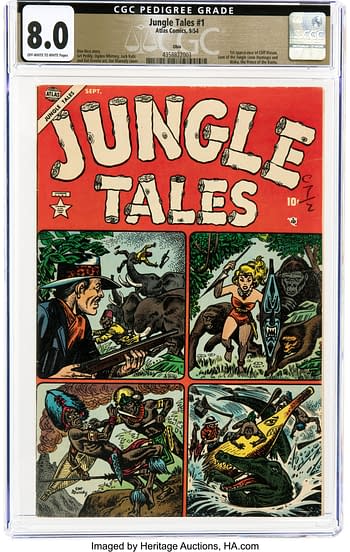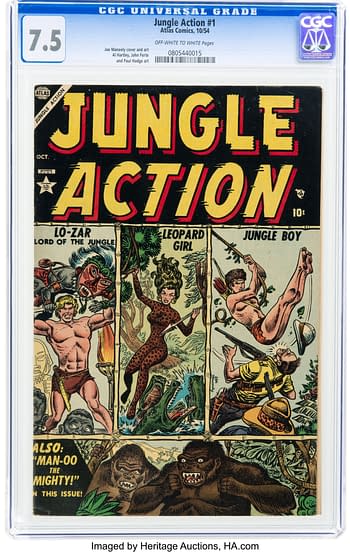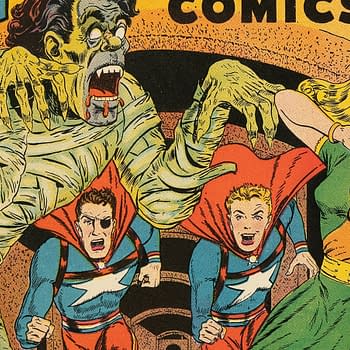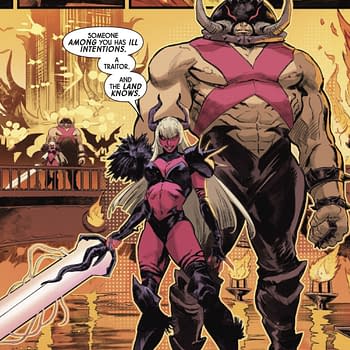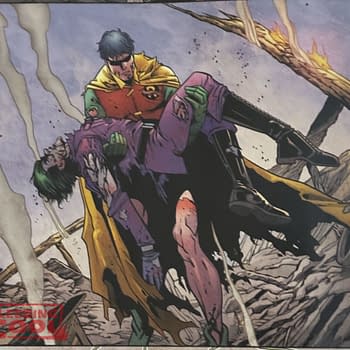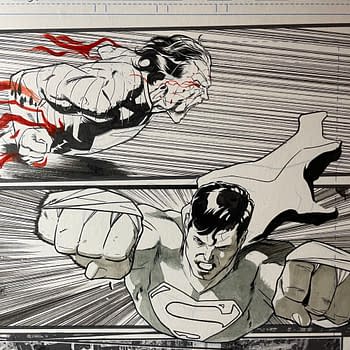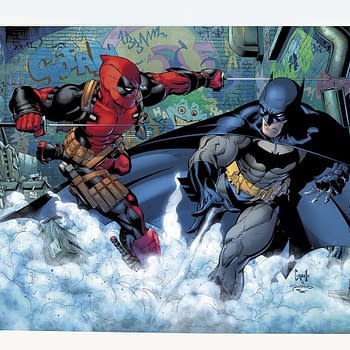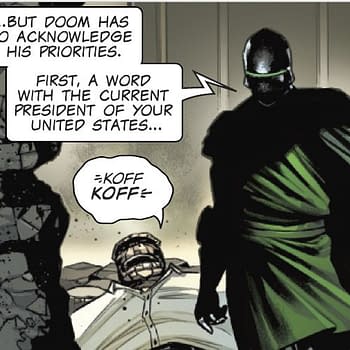Posted in: Comics, Heritage Sponsored, Vintage Paper | Tagged: sheena
Jann of the Jungle, Leopard Girl and Marvel's Code Gamble, at Auction
On the brink of the introduciton of the Comics Code in 1954, Marvel/Atlas expanded into a market segment that Fiction House left behind.
1954 is one of the most interesting years in comic book history for a number of reasons, but the business maneuvers of various publishers are perhaps the most under-discussed aspect of this industry turning point. We recently discussed American Comics Group's Richard E. Hughes and his obvious efforts to position his line for survival between the April Senate hearings on comic books, the September 1954 announcement of the Comics Magazine Association of America alongside the drafting of the Comics Code. He was not the only one. Like Hughes, Marvel's Martin Goodman seemed to have a very good idea of where all this was going early that year, and the introduction of Jann of the Jungle and Leopard Girl in the wake of the success of Lorna, Jungle Girl would seem to be good examples of his thinking in the early months of 1954.

Marvel had initially entered the jungle girl genre with the introduction of Lorna, the Jungle Queen, directly after the last issue of Fiction House's iconic Sheena-starring Jumbo Comics series in 1953. The timeline suggests Fiction House then called it quits right after the April Senate Hearings. Archer St. John put his line on reprint auto-pilot at that point as well, while he prepared to ramp up a children's comics line. Alex Hillman ended his comic book line entirely even earlier, perhaps on getting a tip on plans in the Senate from Hillman Periodicals investor Senator Styles Bridges.
Goodman seemed to have seems to have less drastic measures in mind. After the comic book industry's public humiliation by the U.S. Senate in the national media in April 1954, changes in the makeup of the Marvel line were subtle. Perhaps surprisingly in the context of the moment, Lorna the Jungle Girl was joined by two other jungle-themed comics Jungle Tales and Jungle Action in quick succession. These titles introduced Jann of the Jungle and Leopard Girl respectively, immediately after Fiction House's departure ended titles like Jungle Comics and Kaanga.
Richard E. Hughes seems to have been using the April to September 1954 window to figure out what was going to be acceptable in the post-Moral Panic reality, and Goodman may have been thinking along similar lines. His theory during 1954 seems to have been that there was airspace between what existing comic book horror, romance, and even jungle girl fans would still read and what the censors would allow. And perhaps by threading that needle, he would at least be able to maintain his output levels as other publishers fell by the wayside. Horror featuring zombies and werewolves became a sort of "weird science" genre that Marvel would exploit more successfully than anyone else, while the jungle girl and romance-style titles were more restrained. War and western portrayed violence that was more implied and less overt. But where Archer St. John and others attempted a drastic approach, Hughes and Goodman's measures seem more targeted. Just enough to get by.
Even so, these constraints produced some fascinating comics in 1954 and beyond. Marvel's jungle girl titles are a fascinating example of the company's history from this mid-1950s period and there are high-grade copies of Jungle Tales #1, Jungle Action #1 and several other examples of the era up for auction in 2024 October 3 – 5 Good Girl Art and Romance Comics Showcase Auction #40269.
- Jungle Tales #1 (Atlas, 1954)
- Jungle Action #1 (Atlas, 1954)



